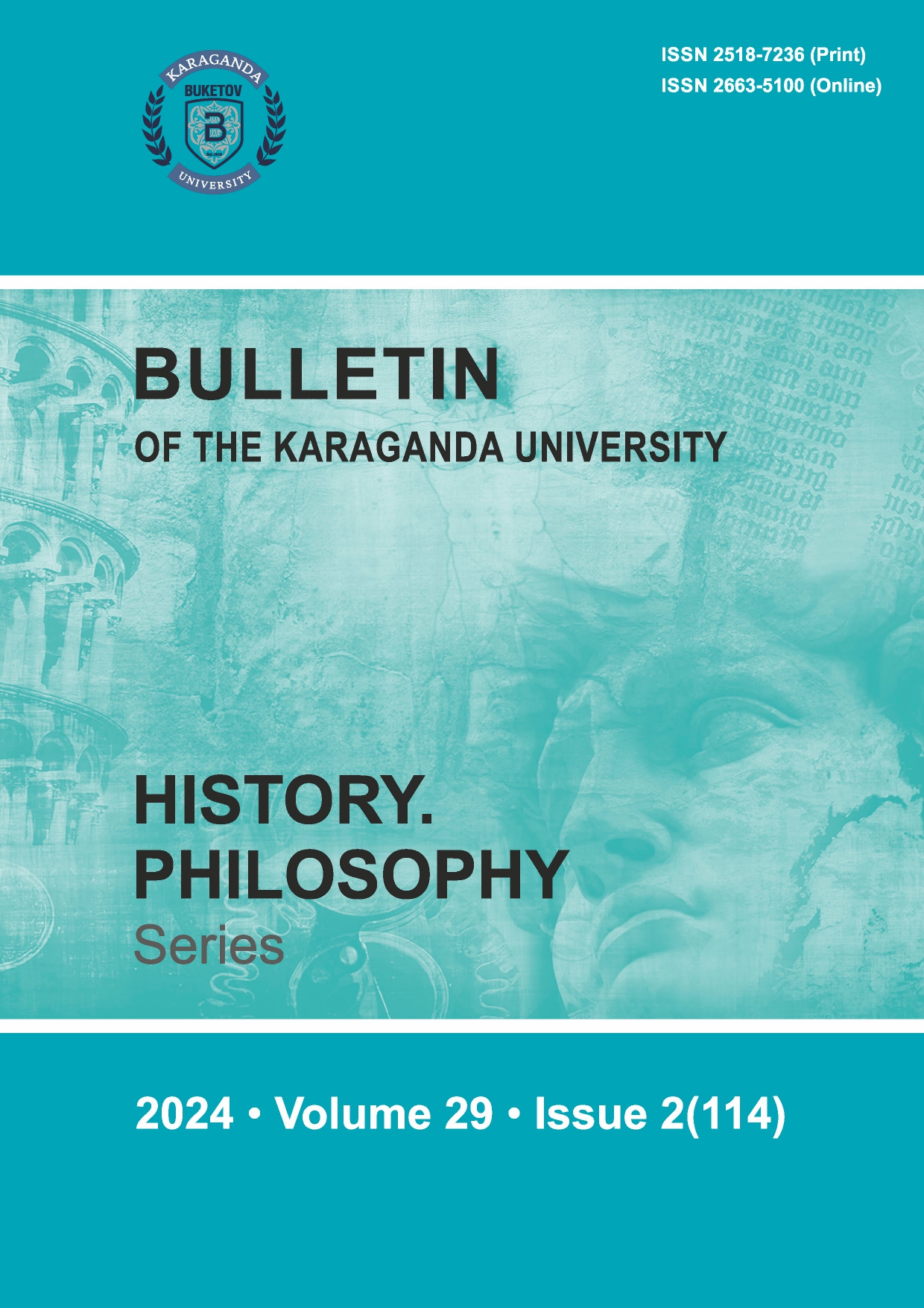Writing land and water data about medieval states in the work “Shezhire-i Tarakim”
DOI:
https://doi.org/10.31489/2024hph2/174-186Keywords:
Turkic tribes, Turks, Mughals, Kazakh Khanate, MughalsUluses, writings, “Shezhire-i Taraki me”, Abylgazs, medieval Muslim authorsAbstract
The ethnic history of the Turkic tribes living in the Great Steppe took place in difficult conditions for political and social reasons. As a result of processes such as migration, extinction, separation, assimilation, tribal culture is intertwined, forming a new cultural system. At any given time, the historical process took place in a certain historical space. The root of the concept of “space” is an irresistible and infinite phenomenon. And “historical space” is the passage of various historical events and trends on earth at a certain time and in a certain environment. This research paper examines the historical sites of the Great Steppe and their features. The article analyzes data on the Syrdarya, Volga, Ural, Kazygurt rivers, most often mentioned in the work “Shezhire-and Tarakim’, as well as the cities of Almalyk, Sairam, Talas (Taraz) Yangikent, Mangyshlak (Mangystau), Deshty-Kipchak, Maurennahr, Turan, Turkestan.




